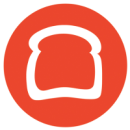Dan Milstein likes to begin meetings at Ellevation Education with a recurring icebreaker called “Good/Bad.”
It isn’t a particularly groundbreaking idea, the chief technology officer admits. First, each person shares something in their life that qualifies as bad. This can be something small, like misplacing their favorite shirt that morning, or something bigger, but the goal is for participants to offer a window into their lives that doesn’t involve their jobs.
Then, as you may have guessed, everyone in the meeting introduces something good about their life, whether it’s the arrival of spring, the completion of a successful vacation, a visit from an out-of-town friend or perhaps the discovery of a new favorite TV show.
“The only rule is that if you hear a bad thing, you aren’t allowed to solve it by telling the speaker how to make the problem go away,” Milstein said. “A proper response can be some version of, ‘Wow, that sounds bad!’ but otherwise that’s it. That’s the whole game.”
Communication exercises like this serve multiple purposes, Milstein explained. In addition to facilitating deeper connections between engineers, they also create an environment in which colleagues feel comfortable raising concerns when they disagree with the direction a project is heading.
“These kinds of deeper connections are incredibly valuable for building trust, which is essential for any high-performing team,” Milstein said. “A foundation of trust allows people to safely challenge each other’s ideas, to swiftly raise concerns and to help each other see their own blind spots.”
Of course, there are many other ways to facilitate this kind of environment among engineering teams. That’s why Built In Boston met with professionals from four local tech companies to learn about communication habits like Good/Bad that set their teams up for success.

What is a communication habit you’ve developed and encouraged on your team?
One of my responsibilities as an engineering leader at Toast is to seek and provide clarity. To do this, I listen attentively and pause at various times, particularly in a complex discussion, to playback what I have heard and confirm my understanding. I often ask questions like, “Can you please confirm if I am understanding this right?” This helps ensure we are building a common shared understanding as we progress through the conversation. If I haven’t understood something right, I find out about it sooner and am able to have a more efficient discussion.
I also like to end the discussion by reiterating salient points, key decisions and action items, capturing them as notes so everyone understands next steps. Everyone appreciates clarity. This is a useful habit no matter what role you are in and something I encourage for managers and individual contributors alike. I especially recommend this technique to new hires; the playback process helps solidify new concepts and gets them up to speed quickly.
Everyone appreciates clarity.”
What effect has this habit had on your team culture?
Stopping to check and validate your understanding demonstrates curiosity and diligence around getting it right. Oftentimes, the reiteration in slightly different words helps make it clearer for other people on the team. It can be a useful tool to point out where there may be gaps or divergence in our understanding and to resolve those differences. It serves as a gauge for the speaker to assess how effectively they are able to get their point across and use it as a feedback mechanism. Additionally, it conveys that you are comfortable with possibly being wrong and are willing to be corrected. When leaders are willing to be vulnerable, it encourages others in the group to feel less self-conscious and more comfortable with doing this as well, all of which adds to greater collective knowledge on the team.
What advice do you have for engineering managers looking to create healthy communication habits among their teams?
As an engineering leader, I’ve found it effective to expand the idea of reiteration beyond the limits of a discussion. Continually and consistently repeating the message in multiple forums and through multiple mediums helps convey what is important and makes it stick. It helps key information sink in and allows everyone to develop a common mental model of what needs to be done.
The other communication habit that helps teams function well is to be continually talking among themselves, thinking out loud and sharing contextual information as they go about their tasks. This brings on heightened awareness and deeper understanding on the team — almost like a shared consciousness that enables teams to move quickly and respond to crises more effectively.
Toast provides software designed to simplify restaurant and hospitality management.

What is a communication habit you’ve developed and encouraged on your team?
As an engineering team closely aligned with the Scaled Agile Framework, we have daily meetings where we review the kanban board and double-click on any changes or progress that’s been made.
This year, we began rotating the responsibility of leading daily meetings. Each engineer gets the opportunity to ask their colleagues questions about their work and address any blockers they’re experiencing. I’ve noticed that the engineers pay closer attention to their colleagues’ work and offer feedback this way. Then, they later apply those same observations to their own work. This is exactly what we aspire to encourage: independent, self-correcting, collaborative engineers.
Regular one-on-one meetings are also important to discuss career-related and non-immediate work topics to ensure everyone feels fulfilled and supported. Although we’ve worked remotely since I hired the team, we’re still tight-knit and capable of keeping a cadence separate from daily work.
What effect has this habit had on your team culture?
As a site reliability-focused team, urgent situations come up quite frequently. Flexibility is crucial to our success, and rigid micromanagement doesn’t create a healthy environment where people will do their best work. Pushing someone to get a task done if they’re already stressed or need to take the day off may offer a tiny bit of output in the short term, but it will inevitably hurt the relationship in the long run.
As long as the work we commit to gets done — and the team produces quality results — I trust them completely. We focus on outcomes, encourage autonomy and leave decisions about scheduling to each individual. It’s important that they take care of themselves and work in a way that enables them to be the most productive; it’s hard to predict the less-flexible days of recovering the production application, and they go a lot smoother when the team is baseline relaxed.
If you build that foundation of trust, people will feel enabled and empowered. They will be comfortable coming to you when they have problems and will also be available when others on the team need them. As a result, your team will consistently produce the best outcomes.
If you build that foundation of trust, people will feel enabled and empowered.”
What advice do you have for engineering managers looking to create healthy communication habits on their teams?
When you have feedback or constructive criticism for a team member, seek to understand before you judge: Have conversations — ideally in-person or over video — and ask questions to understand the context around an outcome. Hi Marley has made this approach a key part of our company culture.
For example, I noticed an engineer was behind the planned delivery of a project. We spoke about their workload, and I learned they were pulled into an urgent unplanned customer-related task. It was clear the problem was a lack of visibility into unplanned work. This led to better reporting at Agile ceremonies to reflect where the team’s time is spent. In this case, we arrived at a much better outcome than might have happened if I led with an assumption about why we were behind on planned work.
Hi Marley is an intelligent communication platform for the insurance industry.
What is a communication habit you’ve developed and encouraged on your team?
One essential communication habit I continue to improve on and encourage my teams at Bullhorn to practice is being concise: Not only what is said, but where it’s said, what is asked and to whom it’s directed.
The ease of communication in today’s connected world tends to lead down two paths. The first is quick and informal messages that skew vague. The second is long-winded, expansive posts to the point where people skim or completely skip, especially when lacking a clear request.
These vague and overly informational communications can happen at any point in the product life cycle, though in my experience high-priority escalations are where these types of posts tend to occur more regularly. Everyone is running at a rapid pace and trying to solve problems simultaneously. This can lead to just sending a problem statement through the chosen communication channel. The problem is only a piece of the necessary information. Failing to call out what kind of action is needed, who you are requesting action from and how quickly the actions are required can increase risk and extend the time to resolution.
Everyone is running at a rapid pace and trying to solve problems simultaneously.”
What effect has this habit had on your team culture?
Concise communication is incredibly important to avoid long-winded and vague conversations, as it leads to churn and makes every step of the process take longer. If a communication that’s sent out is vague, verbose or lacking a clear ask, it can lead to confusion and frustration. This leads to more questions, the need to make the request again in another channel or the need to spin up meetings to discuss the problem at hand. These things lead to churn, which, left unchecked, will eventually lead to burnout.
Being concise with our communication makes everything run smoothly and allows us to arrive at resolutions faster. Solving these pain points and doing so efficiently leads to happier, more focused and infinitely more efficient teams.
Protecting your people’s time and focus can make or break a team.”
What advice do you have for engineering managers looking to create healthy communication habits on their teams?
Think about not just being concise in communication, but also the timing of the communication. It’s important to understand what any communication can do to your team’s productivity, efficiency and happiness. In today’s increasingly connected world, it’s easy to always be online and pinging your team for status updates, questions or just asking how their weekend was.
These are all essential aspects of being a leader, but protecting your people’s time and focus can make or break a team. A single email or chat message can completely break an individual’s focus. Depending on the channel chosen for the communication, a single message could disrupt an entire team. Utilizing tools and add-ons like scheduled emails or posts and respecting offline focus time and message statuses such as away and do not disturb are easy ways to increase productivity and decrease burnout.
When you combine these two principles — concise communication and effective timing — you will unlock a great deal of potential for your team.
Bullhorn provides cloud-based customer relationship management solutions for companies in business services industries.

What is a communication habit you’ve developed and encouraged on your team?
I like to use an exercise at Ellevation Education called Good/Bad when leading 1:1s and recurring meetings. It is a quick way to help people connect more deeply. I suspect this is the case because expressing your feelings is a form of vulnerability, and vulnerability is a powerful tool for helping people see each other and also to feel seen.
Be intentional, and don’t be afraid to experiment.”
What advice do you have for engineering managers looking to create healthy communication habits on their teams?
Be intentional, and don’t be afraid to experiment. We live in a strange time when there’s a deluge of ways to interrupt each other: buzzing other people’s phones, piling items onto each other’s to-do lists with a casual email, popping up enticing red badges on a half-dozen different apps we all live on.
It’s easy to feel like we, as leaders, should just step back and let people figure out how they want to communicate, given the richness of the tools. But these tools end up creating expectations and norms that are impossible for any one person to manage. As such, being intentional about how you ask your team to communicate with each other, and leading explicit experiments around that, can be very powerful.
Ellevation Education is a web-based software platform designed for educators and the English learners they serve.












